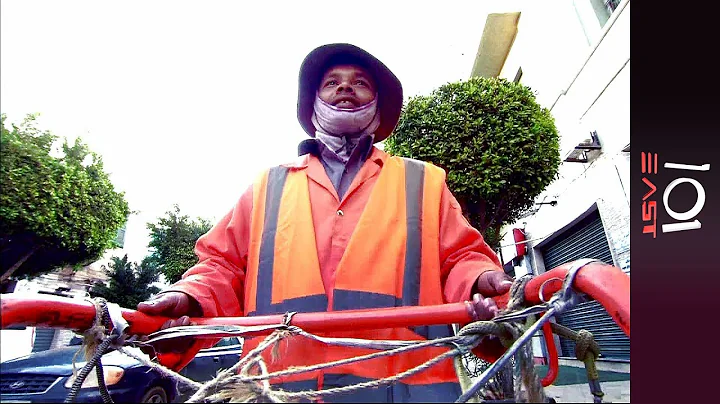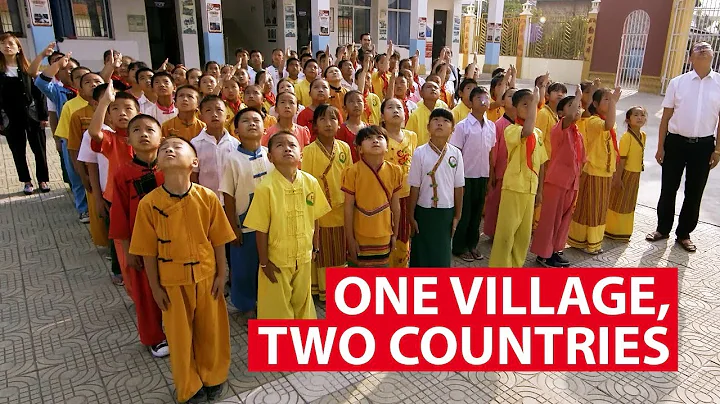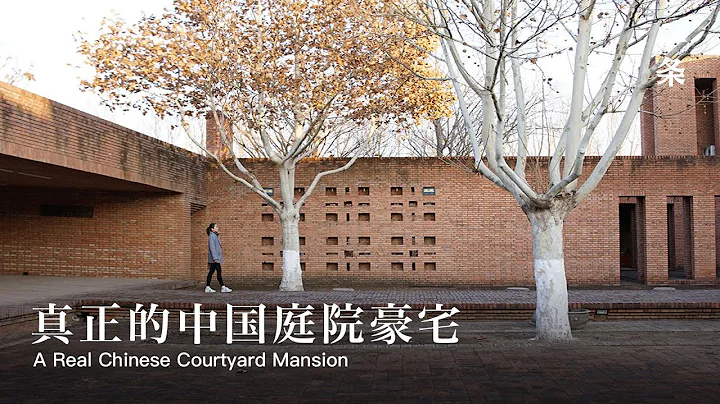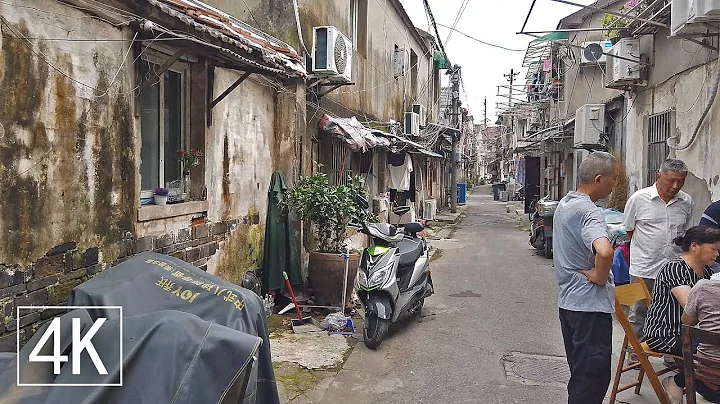The call of the motherland has plucked the ardent patriotic heartstrings of so many aspiring young people; the call of the motherland has inspired many passionate young people to embark on the "small third line" without regrets; the call of the motherland has achieved those glorious years of burning passion. Time is not old, time flies. The passionate years of Laiwu's "Little Third Front" construction in the last century have now been sublimated into a cultural accumulation of vigorous progress in the new era.

▲ Photography: Wang Xiao
This is Tazi Village, Gaozhuang Street, Laiwu District. The former Shandong People's Printing Factory (709) is a large-scale, red-brick old building that is well preserved in the specific historical period of the 1960s and 1970s. The style of the times. Thinking back to those days, hundreds of third-line builders from all over the world used their hard-working hands and sweat to build printing bases in desolate and remote ravines to support wartime use.



▲ Former Shandong People’s Printing Factory in Tazi Village (709) || Photography: Wang Xiao
The Four Great Classics, the fourth set of RMB , primary and secondary school textbooks, and Shandong College Entrance Examination Papers have all been printed here for many years. Today, the rich industrial heritage has been turned into a memorial hall for the construction of the "Shandong Small Third Line". Historical photos, rusty appliances, and witnesses full of age, seem to bring people back to those "passionate years."

▲Shandong Xiaosanxian Memorial Garden|| Source: Yingtai Culture and Tourism


▲Photography: Wang Xiao
In the 1960s, in order to strengthen war preparations, Chairman Mao made the strategic decision to build a "three lines", dividing the country into the front line, the middle zone and the The strategic rear areas are referred to as the first line, the second line and the third line respectively. The hinterlands of the first and second tier areas are collectively referred to as the “small third tier”. The central government has decided to establish an industrial system including energy, manufacturing, military industry, etc. in the "third tier" and "small third tier" areas as soon as possible. All new projects will be in the "third tier", and projects that can be relocated must also be moved to the "third tier". Since then, the "third-line construction" centered on national defense industry and basic industry and aimed at preparing for war and famine has become the top priority of national economic development.


▲ Picture provided by: Bi Jianbo
Laiwu is located in the hinterland of central Shandong. It has an important strategic location and is surrounded by mountains. It is an ideal strategic rear area and is included in the "small third line" construction scope. Since 1964, Laiwu has successively included Shandong Provincial Department of Transportation Automobile Repair Shop, Shandong Xinhua Machinery Factory, Qingdao Dye Factory Laiwu Branch, Laiwu Machinery Repair Factory, Shandong Telephone Equipment Factory, Tai'an District Laiwu Steel Plant, and Laiwu Power Generation. Factory, Zhangjiawa Mining Company of the Ministry of Metallurgy, Shandong War Readiness Printing Factory and other national, provincial and local enterprises were completed and put into operation within the territory. The "small third line" construction project became the backbone enterprise in Laiwu during this period and an important part of the county's national economy.


▲The former site of the automobile repair shop of the Shandong Provincial Department of Transportation

▲The former site of the "small third line" war reserve treasury in Laiwu || Source: the famous city of Jinan

▲The old site of the "small third line" war reserve treasury in Laiwu || Source: Qilu Architectural Culture
In 1968, the Tai'an area decided A joint iron and steel enterprise is to be built. The site is located south of Yalu Mountain in the west of Laiwu City. The enterprise is named "Taian Prefecture Laiwu Iron and Steel Plant", referred to as "Little Steel Union". It was constructed in 1970. The first blast furnace was put into operation in 1971. The second blast furnace was put into operation in 1976. Production was stopped in 1981. In 1983, Tai'an City decentralized the enterprise's organizational structure to Laiwu County. Production was resumed in 1984 and the name was changed in 2000. It is Shandong Taishan Iron and Steel Co., Ltd. After years of vicissitudes, the fire has become more and more prosperous, and it has now developed into a company dominated by steel production and deep processing, with stainless steel as the main business, with high-quality plates and strips as the main body, integrating new materials, high-end equipment, clean energy, and international trade. A large modern enterprise group that develops , capital operation, logistics and transportation, real estate development, urban heating and other industries simultaneously and develops through the coordinated development of industry, academia and research, it ranks among the top 500 Chinese enterprises.

▲In 1992, Laiwu Iron Works was renamed Shandong Taishan Iron and Steel Corporation|| Source: Taishan Iron and Steel official website

▲In 2000, it was changed from state-owned to privately owned|| Source: Taishan Iron and Steel official website

▲Today's Taishan Iron and Steel|| Source: Taishan Iron and Steel Group
However, not all "small third-tier" construction projects have stood out and grown in market competition like Taishan Iron and Steel. Affected by many factors such as economic system reform and state-owned enterprise reform, most "small third-tier" enterprises in Laiwu have After relocation, bankruptcy, and closure, the remaining factory sites and industrial facilities have become "small third-tier" industrial heritage.



▲Xiaosanxian Ruins in Laojuntang Village || Source: @不知fleas
The "Xiaosanxian" spirit combines the essence of military culture, corporate culture, national culture, regional culture and other cultures, and has distinctive characteristics of the times and regional characteristics. Become an important "symbol" of the spirit of the times. Laiwu District is based on the red resources of the "small third line" and builds a memorial park for the construction of the small third line in Shandong. Based on the old site of Shandong War Ready Printing Factory, and expanding the content with Shandong Automobile Repair Factory, Shandong Telephone Equipment Factory, Laiwu Power Plant, etc., we will create a composite, multi-functional party-building activity base, traditional education base, film and television science popularization base, and industrial heritage tourism base.
Shandong People's Printing Factory covers a total area of 123 acres, with 48,000 square meters of original workshops, warehouses, dormitories, canteens, clubs, schools and other facilities. The structure is solid and well-preserved. The first phase uses the original No. 1 workshop to build the "Shandong Small Third Line Construction Memorial Hall", comprehensively using historical images, sculptures, simulation art and other forms, in accordance with the concepts of "opening up memories, stormy weather, strategic rear, feelings of family and country, and the song of time". The sequence shows the builders' spirit of listening to the party's call, being loyal to the party, working hard, and selfless dedication during the third-line construction period, recreating those passionate years.

▲Interior of Shandong Xiaosanxian Memorial Hall|| Photography: Wang Xiao




▲Interior of Shandong Xiaosanxian Memorial Hall|| Photo source: Tianxia Quancheng
After half a century of spring and autumn, the "Little Third Line" that once lurked in this land has long been completed. Its historical mission has been fulfilled, and now it has entered people's field of vision with a new attitude. It is a magnificent picture with rich colors in the memory of the Republic, a magnificent feat in the history of Shandong revolution and construction, and an indelible red gene in Laiwu, a hot land of revolution. The third-line spirit of "loyalty to the party, hard work, unity and cooperation, and selfless dedication" will surely become a precious spiritual legacy of this land and a huge force for carrying forward the past and forging ahead into the future.
END
Source: Xinlaiwu








![[4K] Walking tour of China seaside town, Gangkou Town, Huidong County, Guangdong. - DayDayNews](https://i.ytimg.com/vi/U0VKBt_12SA/hq720.jpg?sqp=-oaymwEcCNAFEJQDSFXyq4qpAw4IARUAAIhCGAFwAcABBg==&rs=AOn4CLC5soJKdkh8CE0Putx_E-zcbCMMvQ)











![✨A Will Eternal EP 01 - 106 Full Version [MULTI SUB] - DayDayNews](https://i.ytimg.com/vi/PkAfGiXQK_U/hq720.jpg?sqp=-oaymwEcCNAFEJQDSFXyq4qpAw4IARUAAIhCGAFwAcABBg==&rs=AOn4CLBTtc2yQP7WY40Q41f_lIF2Yj_WKA)
